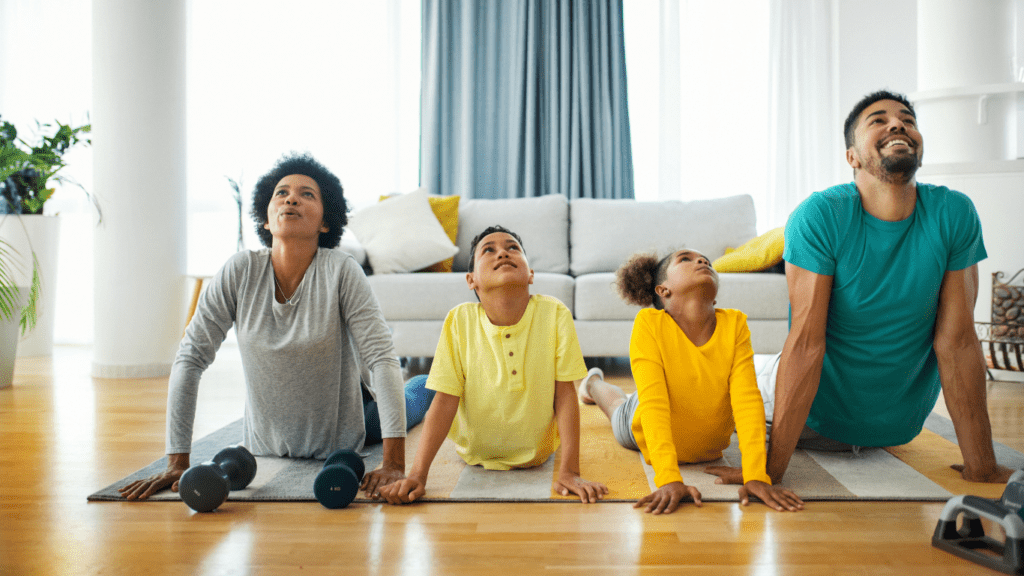Keeping kids active isn’t just about burning off extra energy—it’s about building habits that support their physical and mental well-being. With screens competing for their attention, finding fun and engaging ways to promote movement can feel like a challenge. But trust me, it doesn’t have to be complicated.
Importance Of Keeping Kids Active
Encouraging children to stay active nurtures their overall well-being and builds lifelong healthy habits. Physical activity supports both their physical and mental development.
Benefits Of Physical Wellness For Children
Exercise strengthens muscles and bones. Activities like:
- running
- jumping
- climbing
improve cardiovascular health and boost coordination. Staying active also helps regulate weight, reducing the risk of childhood obesity.
Movement positively impacts mental health. Active children often have better mood control, lower stress levels, and improved sleep quality. Regular play improves social skills, building teamwork through interaction in group sports or games.
Physical activity enhances focus. Kids engaging in outdoor play or sports tend to show stronger attention spans and cognitive performance in academic settings.
Risks Of A Sedentary Lifestyle
Inactivity leads to health issues. Prolonged periods of sitting or screen time contribute to:
- obesity
- poor posture
- weakened muscles
Lack of movement also elevates the risk of chronic diseases like diabetes and heart conditions later in life.
Mental health suffers without activity. Sedentary habits increase anxiety and depression, especially as reduced movement limits opportunities for social engagement and stress relief.
Poor physical activity hinders development. Without regular movement, children may experience delayed motor skill progress, reduced strength, and a lack of endurance.
Creative Outdoor Activities
Encouraging outdoor activities helps kids stay active while enjoying fresh air and natural surroundings. By making these activities fun, kids are more likely to develop a lasting love for movement.
Fun And Engaging Sports
Incorporating sports into outdoor play introduces kids to teamwork and builds physical skills. Soccer, basketball, or kickball in the park allow kids to run, jump, and collaborate, enhancing their coordination and endurance. For smaller spaces, introducing games like badminton or frisbee keeps movement consistent. I also recommend less conventional options like obstacle courses or relay races, which can be tailored to a child’s skill level.
Nature Exploration And Hiking
Organizing hikes and nature trails combines physical activity with learning opportunities. Exploring trails of varying difficulty lets kids develop endurance while observing wildlife and plants. Scavenger hunts, where kids search for natural items like pinecones or flowers, add an interactive element. If the trail has water sources like lakes or streams, briefly stopping for safe wading or skipping stones boosts engagement.
Indoor Physical Activities

Keeping kids active indoors combines creativity and fun to ensure they stay engaged and energized. Activities like dancing and obstacle courses are perfect for enhancing motor skills and encouraging movement even in small spaces.
Dancing And Fitness Games
Dancing engages kids in full-body movement while building coordination and rhythm. I recommend organizing family dance-offs or following kid-friendly dance videos online, such as those on YouTube. Fitness games like interactive video games, including motion-controlled options like Just Dance or Ring Fit Adventure, make exercise feel like a game. These activities help improve cardiovascular health and boost mood while keeping kids entertained.
DIY Obstacle Courses
DIY indoor obstacle courses turn any living space into an adventure zone. Use pillows, chairs, and jump ropes to create safe, challenging paths. I suggest adding variations like crawling under tables, hopping between marked spots, or balancing on a taped line. These courses promote balance, problem-solving skills, and endurance. Tailoring the course to your child’s age ensures it’s both fun and developmentally appropriate.
Promoting Active Playtime
Encouraging kids to engage in active playtime fosters both physical wellness and a love for movement. Tailored routines and group activities can make playtime more enjoyable and consistent.
Setting Up A Routine
- Establishing a playtime routine helps children associate daily schedules with movement and fun.
- I suggest designating specific times each day for physical activities, such as right after school or early in the evening.
- Keeping the duration manageable, like 30–60 minutes, ensures consistency without overwhelming them.
- Rotating activities weekly prevents boredom: one week could focus on jumping rope, while another includes bike rides.
- Using visual aids like charts or activity boards keeps kids motivated and allows them to track their progress.
- Integrating rewards for completing weekly goals, like extra storytime or a nature outing, adds excitement.
- If children have preferences, such as hide-and-seek or hopscotch, include those for a personalized routine.
Encouraging Group Activities
Group activities create opportunities for children to build social skills while staying active. Organizing small group games like tag, relay races, or soccer encourages teamwork and enhances coordination. I recommend inviting neighbors or classmates to join, turning playtime into a fun gathering.
Community sports programs or classes, such as gymnastics or swimming, offer a structured environment for group play. For informal settings, hosting themed playdates, such as obstacle course challenges or scavenger hunts, helps energize kids and keep them curious. For variety, alternating indoor options like dance parties or outdoor favorites like capture the flag ensures engagement across different settings.
Tips For Maintaining Consistency
Maintaining consistent activity helps children develop habits that support their physical wellness over time. Regular engagement becomes easier when routines feel enjoyable and are supported by meaningful involvement.
Making It A Family Effort
Involving the whole family creates a supportive environment for active habits. I plan family activities like weekend hikes, bike rides, or evening walks after dinner. Coordinating these activities with everyone’s schedule ensures participation. Family challenges, like step counting contests, add a fun competitive element while promoting teamwork. When kids see parents staying active, they associate physical wellness with a shared family value.
Rewarding Consistent Activity
Celebrating consistent engagement motivates kids to keep moving. I use non-material rewards, like extra playtime or letting them choose a weekend activity. Tracking progress with visual tools, like sticker charts or calendars, lets children see their efforts add up over time. When kids meet their consistency goals, I create small milestones, such as a fun outing or recognition during family gatherings, to make their accomplishments feel special.





